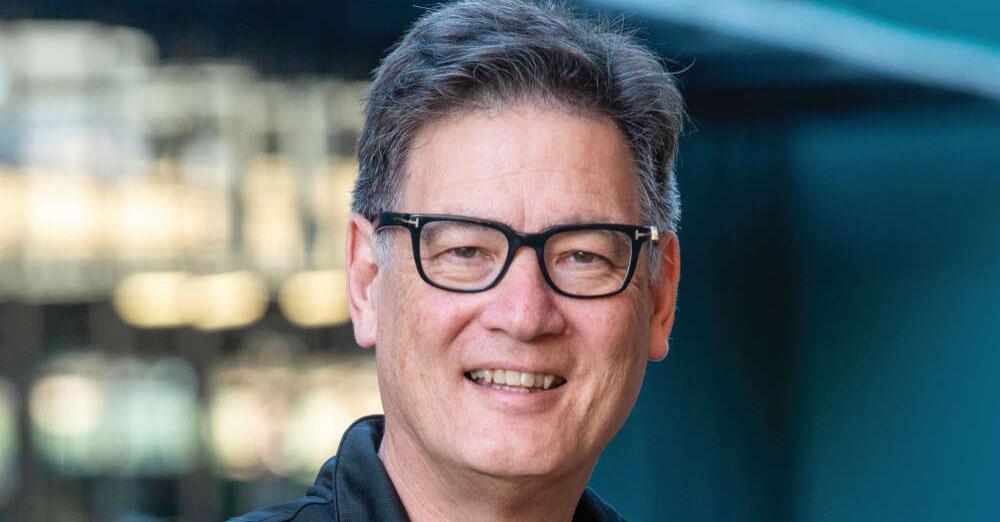My twin received an AM, becoming a Member of the Order of Australia this week. It is worth discussing why.
It was on April 15, 1971, at an event denounced by the crusty conservatives of our state upper house that Peter Sandeman discovered he had a public voice – a talent for persuasion and dialogue. It was at a state wide high school student strike organised by a group called the Union of Secondary Students, that Peter found himself leading a teach-in down by the banks of the River Torrens. It had a lasting effect on him.
The AM citation reads “for significant service to the Anglican Church of Australia and the people of South Australia.” My totally unbiased view is that it is well deserved.
But when a couple of profiles congratulated him on 40 years work for social justice – I wondered if it is closer to fifty. Which must make both him and I feel old.
I think I struggled more than he did with the contradiction between marching in a anti-war Vietnam moratoriums and going to church on Sundays at a quasi-fundamentalist church. Peter and I were the only kids in the youth group that wanted to go to Uni. For the others, it was too wild a place to be. Besides the word was that Uni was where people lost their faith.
Both he and I has formative experiences at Uni, regarding faith, following the strange intertwining semi-parallel lives of twins.
My campus Evangelical Union backed me when I ran to edit the Adelaide Uni student paper On Dit. They even voted for me. I won. And for a decade Christians ran in partnership with non Christians to edit that paper.
But at Flinders Uni, where white off-cast concrete lecture halls carpeted some bare hills on what was then the edge of town, Peter faced a different verdict from the campus Christians. He became president of the Students’ Association after the tragic death of a friend. The Flinders Christian Fellowship regarded this as too worldly an act for Peter to remain a member. They tossed him out.
Peter told Lim of “a [Christian] crusade on campus. And I asked the campaigner one question, which was, ‘What’s my responsibility to fellow human beings?’ And was told, ‘Well, just get yourself right with Jesus and don’t worry about anybody else.’ “
For me a similar event was a poster responding to Apartheid showing a back and white hands grasping each other with the slogan “get it together in Jesus.” But about that time on my campus, the activist evangelist John Smith showed us a better way, we were to serve the University.
But these different Christian flavours marked somewhat of a divergence between twins. Peter, now a deacon in the Anglican church only worked his way back to church slowly.
Peter described my journey to Anne Lim of Eternity as “So when John left Adelaide and went to Sydney and joined the Sydney Diocese, that was a leap to the Left for John.”
Perhaps the Flinders Christians encouraged Peter to take a few more steps, towards a more progressive tradition. But his social activism, whether as a ministerial advisor to a Labor minister, the public service. Mission Australia or either of the two Anglicare’s heof which he has been CEO has been shaped by a vocation for Christian service.
He fits the role of deacon. He’s been known to wear his deacon outfit to meetings in the public service, when he has a church event afterwards.
It has discombobulated people, who can’t connect the dots. How to fit together this effective advocate for homeless people – who has gained enough cred to be heard by Coalition and Labor governments, with a bold Christian presence?
How to fit together a strong advocate for children in need, formed in part by Peter and my origins in being surrendered by our mother, then time in an orphanage and extremely lucky to have been fostered and adopted together, with the dog collar he’s been known to wear?
There is a reverse discombobulation for Christians who want to pare everything down to the task of evangelism. But Peter ties his life’s work to something that was devised after he started on this path. He’ll cite the Anglican “five marks of mission” which include evangelism, teaching the faith, but also loving service, seeking justice and creation care. It is a great job description for a deacon and for those of us who strive to be deacon-like.
I suspect the five marks owe a lot to David Bosch’s Transforming Mission: Paradigm Shifts in Theology of Mission a book which I came across at Moore College but which Peter had been living for some time. The book asks church to seek to live out what it means to be the imago dei.
At The Other Cheek the place of Christians in our society is something we write about a lot. Peter is a prime example of how Christians can take hold of something they may not realise they have been losing – a social license.
But someone has said the same thing in a much less jargony way.
“Let your light shine before others, that they may see your good deeds and glorify your Father in heaven.” (Matthew 5:16)


This is such a rich tribute to Peter, John, for his well-deserved award, but also so helpfully insightful.
Lovely and inspiring story!